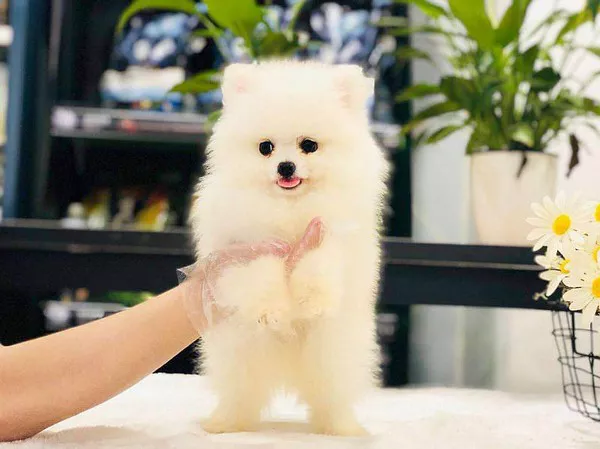Introduction
Grooming your Pomeranian is more than a routine; it’s a bonding experience that enhances your furry friend’s well-being. In this comprehensive guide, we explore the intricacies of grooming your Pomeranian, from understanding their unique coat and skin requirements to mastering the techniques that make the process enjoyable for both you and your beloved companion. Unveiling the secrets to a successful grooming routine, this guide aims to equip Pomeranian owners with the knowledge and skills necessary for maintaining their pet’s radiant appearance and optimal health.
Understanding the Pomeranian Coat
Grooming your Pomeranian begins with a deep appreciation of their double coat—a soft, dense undercoat and a longer, harsh-textured outer coat. This unique combination requires specific attention to prevent matting, tangling, and skin issues. Familiarizing yourself with the intricacies of the Pomeranian coat sets the stage for a grooming routine that addresses their distinctive needs.
Choosing the Right Tools
Slicker Brush for Daily Maintenance: Grooming your Pomeranian’s coat requires a slicker brush for daily maintenance. This specialized tool helps remove loose fur, prevents matting, and stimulates the skin. Choose a brush with fine, short wires to navigate the dense undercoat.
Comb for Detangling: Combing is essential for grooming your Pomeranian, especially in areas prone to tangling. A stainless steel comb with both wide and narrow teeth is ideal for detangling and ensuring a smooth, knot-free coat.
Gentle Shampoo and Conditioner: When grooming your Pomeranian, opt for a gentle shampoo and conditioner designed for dogs. Pomeranians have sensitive skin, and using products formulated for their specific needs ensures a clean and healthy coat.
Nail Clippers or Grinder: Keeping your Pomeranian’s nails trimmed is crucial for their comfort and mobility. Choose nail clippers or a grinder designed for small breeds to avoid causing stress or injury during the grooming process.
Grooming Your Pomeranian’s Face
Eye Care: Grooming your Pomeranian’s face involves delicate eye care. Use a damp cloth to gently wipe away tear stains, and ensure that the hair around the eyes is trimmed to prevent irritation.
Ear Cleaning: Pomeranians are prone to ear issues, making ear cleaning a vital part of grooming. Use a canine-friendly ear cleaning solution and cotton balls to gently clean the ears, ensuring they remain free from wax and debris.
Teeth Brushing: Grooming your Pomeranian includes maintaining oral hygiene. Introduce teeth brushing early in their life using a dog-friendly toothbrush and toothpaste. Regular brushing helps prevent dental issues and keeps their breath fresh.
The Bathing Ritual
Frequency of Baths: Grooming your Pomeranian involves striking the right balance when it comes to bathing. Pomeranians have a natural oil balance that protects their skin. Avoid frequent baths to prevent stripping the coat of essential oils, typically bathing every 3-4 weeks unless there’s a specific need.
Proper Drying Techniques: After bathing, drying is a crucial step in grooming your Pomeranian. Use a low-heat setting on a hairdryer or a towel to gently dry their coat. Ensure that their coat is completely dry to prevent skin issues.
Addressing Mats and Tangles: Grooming your Pomeranian’s wet coat is an opportune time to address mats and tangles. Use a comb to gently work through any knots, starting from the tips of the hair and gradually moving upward.
The Paws and Beyond
Paw Pad Maintenance: Grooming your Pomeranian’s paws involves trimming the hair around the paw pads for cleanliness and preventing mats. Be cautious not to trim too close to the skin to avoid injuries.
Anal Gland Expression: While not a daily task, grooming your Pomeranian should include occasional anal gland expression. If your Pomeranian scoots or displays discomfort, consult your veterinarian or a professional groomer for guidance on this aspect of grooming.
Embracing Positive Reinforcement
Start Early and Gradual: Grooming your Pomeranian should begin early in their life to familiarize them with the process. Start with short sessions, gradually increasing the duration as they become more comfortable.
Use Treats and Positive Words: Positive reinforcement is essential when grooming your Pomeranian. Use treats, praise, and gentle words to create a positive association with the grooming experience.
Be Patient and Gentle: Grooming your Pomeranian requires patience. Be gentle in your approach, especially when dealing with sensitive areas. If your Pomeranian shows signs of stress, take breaks to ensure a positive experience.
Regular Veterinary Check-Ups
Eye and Dental Examinations: While grooming your Pomeranian at home is vital, regular veterinary check-ups are equally crucial. These visits allow professionals to conduct thorough eye and dental examinations, addressing any emerging issues promptly.
Skin and Coat Health: Veterinarians play a vital role in maintaining the overall health of your Pomeranian. They can provide guidance on specific grooming products, identify potential skin issues, and recommend solutions to promote a healthy coat.
Conclusion
Grooming your Pomeranian is an art that combines love, expertise, and a commitment to their well-being. With a thorough understanding of their unique coat, the right tools, and a positive, patient approach, grooming sessions can become enjoyable bonding experiences. Beyond the aesthetic benefits, grooming your Pomeranian contributes to their health, comfort, and the longevity of the cherished bond you share. As you embark on the grooming journey, remember that each gentle stroke and careful trim is an expression of your dedication to nurturing the radiant elegance of your Pomeranian companion.


